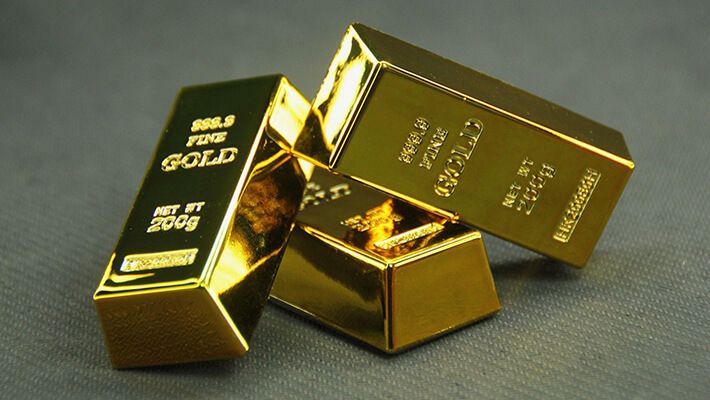Monday Nov 27 2023 07:17

10 min

The attraction of gold isn't just aesthetic, for centuries, it's held a coveted spot in investors' portfolios.
Yet, in this digital age, the debate intensifies: should one invest in physical gold or dive into Gold ETFs?
This pain point often leaves investors, both seasoned and new, at a crossroads. Physical gold boasts tangibility, but Gold ETFs offer a modern, fluid way to tap into the gold market.
In this guide, I will shed light on the benefits and drawbacks of both, helping you make an informed choice tailored to your investment aspirations.
Let’s get started.
Physical gold represents one of the oldest and most direct forms of wealth. At its core, it refers to gold in its tangible form, either as bars known as bullion or as minted coins.
Unlike other assets or commodities, the intrinsic value of physical gold is derived from its purity and mass, rather than any printed monetary denomination.
This means that even if a gold coin has an imprinted face value, its actual market worth is anchored to its genuine gold content.
When diving into the world of gold investments, potential buyers will encounter various purchasing avenues, including government mints, private entities, and jewellers. It's crucial to navigate these channels with care, as prices can fluctuate based on the seller.
Once acquired, physical gold ownership does come with certain responsibilities and costs, such as ensuring secure storage and potentially insuring the precious metal.
These factors underline the importance of informed decision-making when considering such a tangible and timeless investment.

Gold ETFs present an innovative way for investors to tap into the gold market without the need to physically hold the precious metal. These ETFs function like shares that are bought and sold on stock exchanges, but instead of representing a stake in a company, they track the price of gold.
This means investors can enjoy the benefits of gold price movements without being concerned with the challenges of storing or insuring physical gold.
Diving deeper, the underlying mechanism of gold ETFs involves fund managers holding a corresponding amount of physical gold to back the ETF shares issued to investors. This ensures that the ETF’s value closely mirrors that of actual gold.
For those keen on gold as a part of their investment portfolio but hesitant about dealing with tangible assets, gold ETFs offer a streamlined and liquid alternative, merging the allure of the timeless metal with modern financial instruments.
For a more comprehensive understanding of these assets: What are ETFs?
At its core, the primary distinction between gold ETFs and physical gold lies like ownership.
When you own physical gold, you hold a tangible asset, whether in the form of bars, coins, or jewellery. This gold can be touched, seen, and stored. It gives the owner direct exposure to the gold market, with the value directly tethered to its weight and purity.
Conversely, gold ETFs offer an indirect exposure to gold. When you invest in a Gold ETF, you're buying a financial product that tracks the price of gold, rather than the physical metal itself. This means you have a claim to a portion of gold, but you don't have the metal in your hands.
Physical gold requires decisions about storage, insurance, and security. There are tangible costs and concerns linked with safeguarding and preserving the metal.
On the flip side, gold ETFs provide a more hands-off approach to gold investment. Being traded on stock exchanges, they eliminate the need for physical storage and offer liquidity, allowing investors to buy or sell their holdings in real-time market conditions.
The value of a gold ETF is intrinsically linked to the gold price, making it a digital reflection of gold's market dynamics.
In essence, while physical gold appeals to those desiring a tactile asset, gold ETFs cater to those seeking the benefits of gold without the direct ownership challenges.
One of the notable distinctions between the two lies in the ease of accessibility.
Physical gold requires a visit to a dealer, mint, or jewellery store, and often involves negotiating prices or verifying authenticity.
Furthermore, the purchase process can sometimes be lengthy, especially if specific certifications or verifications are needed.
In contrast, purchasing shares of a gold ETF is as simple as buying any stock or mutual fund.
With a few clicks on a trading platform, an investor can gain exposure to the price movements of gold.
Physical gold's costs don't end with its purchase, it brings along the responsibility and cost of secure storage.
Safety deposit boxes or personal safes are common solutions, but they don't come without fees or potential risks, such as theft.
Insuring your physical gold adds another layer of expense but protects against potential loss.
Gold ETFs do charge a management fee, which is typically lower than the cumulative costs of storing physical gold, especially for substantial investments. However, since gold ETFs are financial products managed by financial institutions, they come with an inherent counterparty risk.

Gold has stood strong, maintaining its buying power even in the face of wars and economic downturns. This resilience makes it a sought-after safety net during turbulent times.
Owning physical gold offers an advantage over digital forms or ETFs in crisis moments, as it's universally recognized and can be promptly exchanged for cash or goods.
Additionally, unlike other asset classes, gold often thrives when other investments falter, adding a layer of diversification to one's portfolio.
Investing in tangible gold means having a tangible asset without any attached counterparty risks. Once in hand, that gold bar or those coins belong solely to the owner. No intermediaries are needed for future transactions, providing flexibility in choosing how to sell, be it through a dealer or directly to another party.
However, it's worth noting that while this tangible form of ownership brings unmatched autonomy, it also demands secure storage solutions, potentially incurring additional costs compared to its ETF counterparts.
Gold ETFs offer a streamlined approach to investing in gold. Without the need to handle or store physical bullion, investors can easily buy or sell their gold exposure just as they would a stock, directly through their brokerage accounts.
This simplicity not only ensures accessibility for all levels of investors but also removes the complexities associated with verifying the purity or ensuring the safety of tangible gold.
ETFs are typically more cost-effective. They provide transparent pricing by closely tracking the spot price of gold, ensuring investors get real-time value insights.
Moreover, with high liquidity, they ensure swift entries and exits in the market without significant price discrepancies, making them a financially savvy choice for those aiming for gold exposure in their portfolios.
The choice between gold ETFs and physical gold hinges on individual preferences and investment goals. If you're drawn to the tangible nature of assets and desire direct ownership, physical gold may be your match.
On the other hand, for those who are wary of storage and insurance costs related to physical gold, gold ETFs offer a hassle-free experience. However, if you prioritize convenience, cost-efficiency, and easy liquidity, gold ETFs can be an attractive alternative.
Furthermore, they offer a level of diversification as they often track gold prices but don't require direct handling of the metal.
Each investment avenue has its unique advantages. As always, investors should conduct thorough research, understand the nuances of each option, and perhaps consult with a financial advisor before making a decision.
In the discussion between Gold ETFs and Physical Gold, both investment avenues present distinct advantages.
While physical gold offers tangible security and a direct hedge against market adversities, gold ETFs provide liquidity, convenience, and cost-efficiency.
Your choice ultimately rests on personal preferences, financial goals, and risk appetite. As a next step, it's pivotal to stay informed and continuously assess the market dynamics.
To further enhance your trading strategies and diversify your investment portfolio, consider exploring opportunities at markets.com, a leading CFD trading platform.
Stay ahead in your investment journey, and always seek platforms that empower your decisions.
Check out the article on: What is CFD trading? (A full guide with benefits, risks and CFD trading examples) to learn more about CFD trading.
“When considering ETFs for trading and price predictions, remember that trading CFDs involves a significant degree of risk and could result in capital loss. Past performance is not indicative of any future results. This information is provided for informative purposes only and should not be construed to be investment advice.”